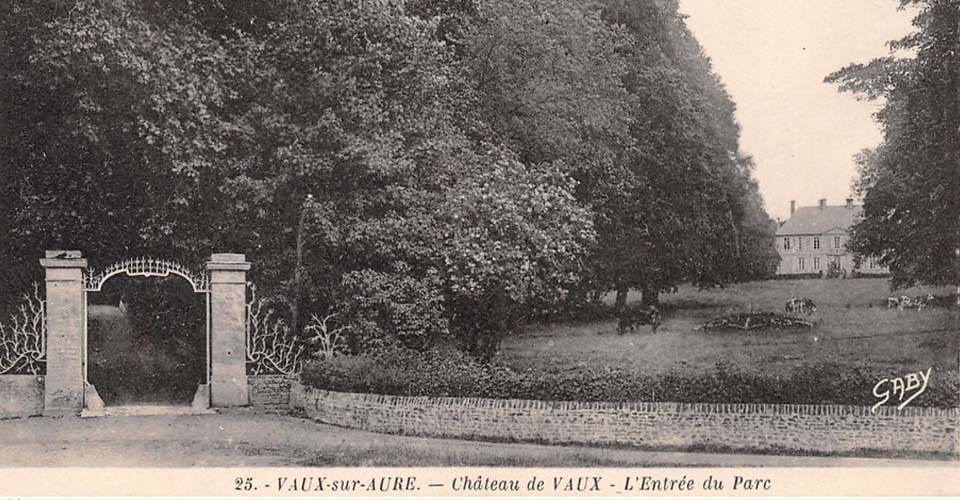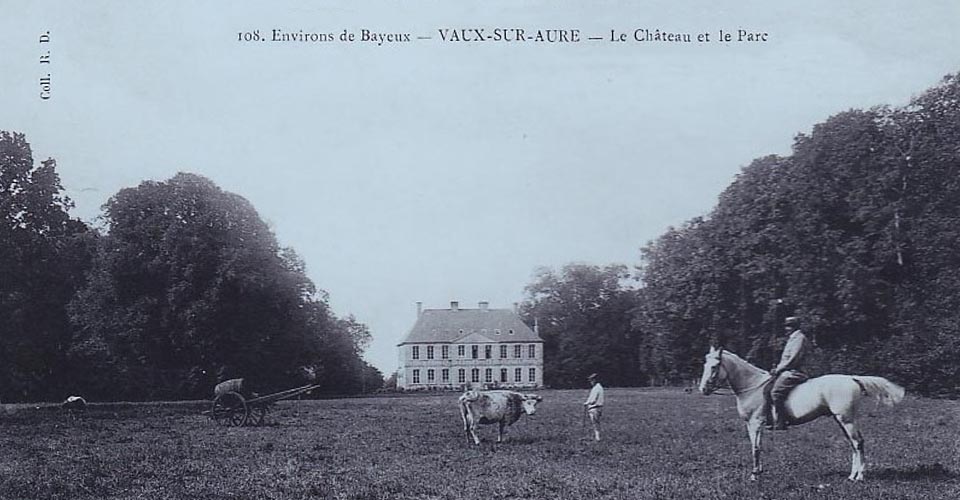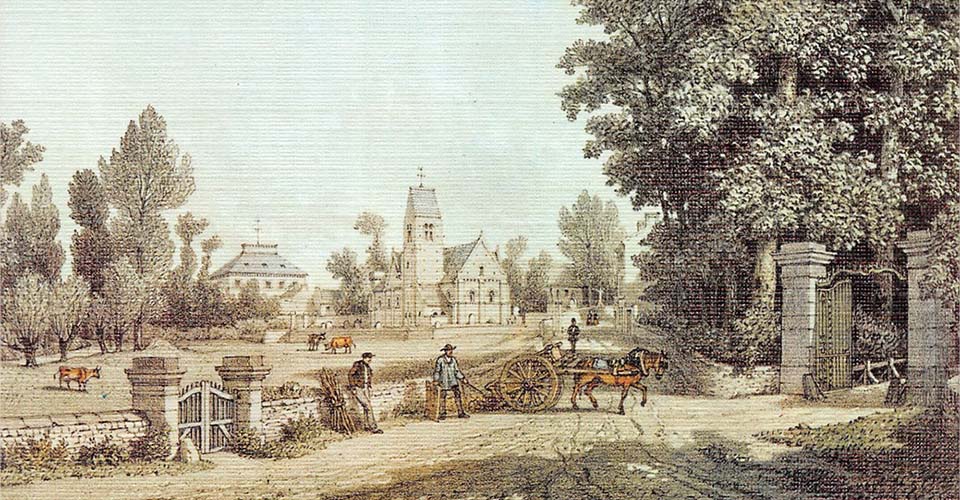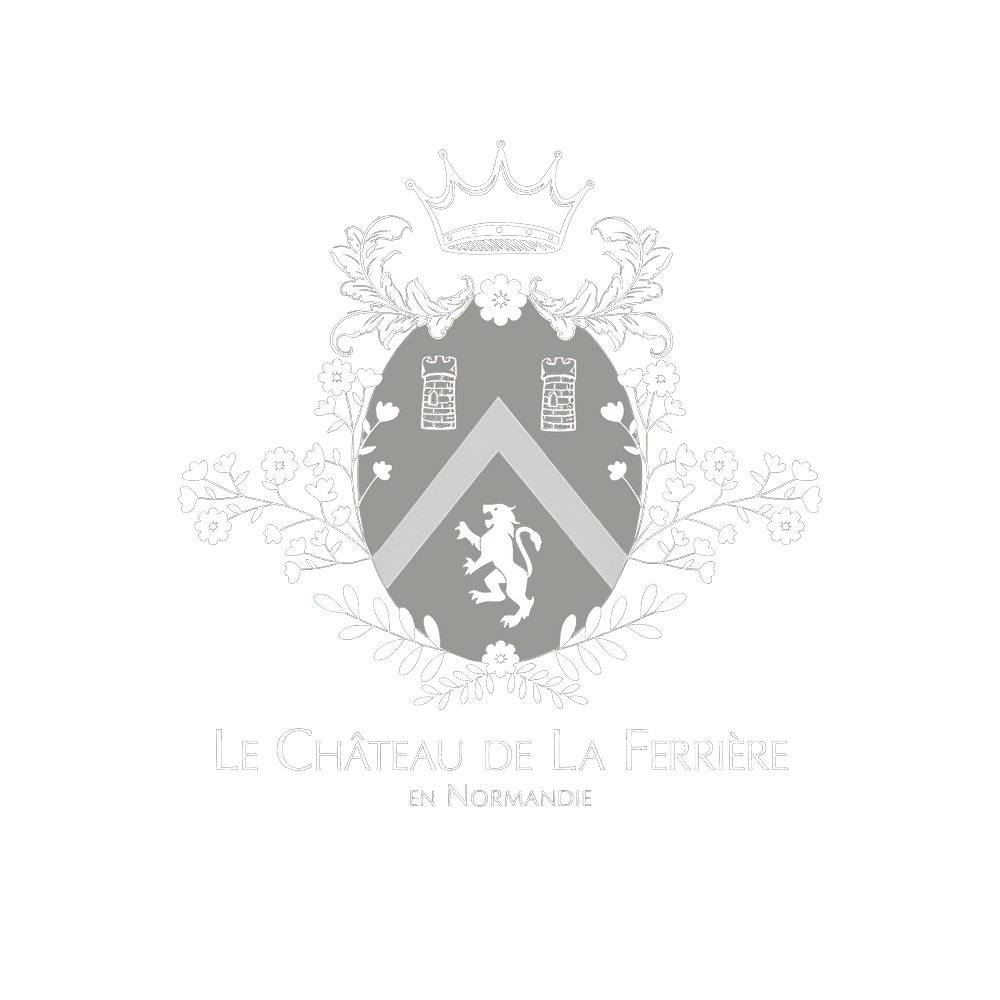Built in 1735 by Jacqueline de Piedoue de Nerval, widow of Michel d’Hermerel (squire of King Louis XV, Lord of La Ferrière and Vaux-sur-Aure, Viscount of Bayeux and Mayor of Bayeux), it was acquired in 1749 by Pierre Jacques Matthieu Moisson d’Urville and became from 1760 to 1789 a rallying point for all plant lovers, thanks to his son the botanist Gabriel Moisson de Vaux.
Friend of Jussieu, Buffon and Linné, he created an exotic garden at the Château de La Ferrière that was admired from all over France. It is to him that we owe the planting of the famous “tree of Liberty” in the shade of the Cathedral of Bayeux, in 1797.
This prodigious plane tree is also the twin brother of several plane trees in the park of château de La Ferrière, where they can still be admired today.


Physiocrat and philanthropist, Moisson de Vaux was chosen by the Revolutionaries to preside over the Directory of Bayeux. He was then appointed Mayor of Caen.
His two children linked their destinies to the French Empire: Michel, titled Baron de Vaux, was intendant to Queen Hortense de Beauharnais; Louise married the Marquis Bazin de Bezons, son of a Marshal of France. His grandson, Amédée Ferdinand, married in 1822 the daughter of the famous Theresa Tallien, known as “Our Lady of Thermidor”.
During the Restoration period, the castle was redecorated by Viscount Toustain de Richebourg, historian and friend of Viollet-le-Duc, who tripled the surface area of the park, rearranged the entire village to integrate them into the vast perspectives of an English-style park.
In 1870, the Château de la Ferrière was acquired by Baron Alfred Issaverdens, the trusted confidant of Ismaël Pacha, Khedive of Egypt.
Then the property was bought in 1917 by the Bauer family. During the Second World War, the castle was requisitioned by the German army. On June 7, 1944, the Germans fled, leaving the place to the Benedictine Sisters of Caen, whose convent had just been destroyed by bombing. They acquired it at the end of 1944 and remained there until 1958, making chocolate. The castle then became a school of rehabilitation L’Adapt.
Since 2007, it has become a family property again and its owners, with patience and passion, are restoring it to its original beauty.

Built in 1735 by Jacqueline de Piedoue de Nerval, widow of Michel d’Hermerel (squire of King Louis XV, Lord of La Ferrière and Vaux-sur-Aure, Viscount of Bayeux and Mayor of Bayeux), it was acquired in 1749 by Pierre Jacques Matthieu Moisson d’Urville and became from 1760 to 1789 a rallying point for all plant lovers, thanks to his son the botanist Gabriel Moisson de Vaux.
Friend of Jussieu, Buffon and Linné, he created an exotic garden at the Château de La Ferrière that was admired from all over France. It is to him that we owe the planting of the famous “tree of Liberty” in the shade of the Cathedral of Bayeux, in 1797.
This prodigious plane tree is also the twin brother of several plane trees in the park of château de La Ferrière, where they can still be admired today.

Physiocrat and philanthropist, Moisson de Vaux was chosen by the Revolutionaries to preside over the Directory of Bayeux. He was then appointed Mayor of Caen.
His two children linked their destinies to the French Empire: Michel, titled Baron de Vaux, was intendant to Queen Hortense de Beauharnais; Louise married the Marquis Bazin de Bezons, son of a Marshal of France. His grandson, Amédée Ferdinand, married in 1822 the daughter of the famous Theresa Tallien, known as “Our Lady of Thermidor”.
During the Restoration period, the castle was redecorated by Viscount Toustain de Richebourg, historian and friend of Viollet-le-Duc, who tripled the surface area of the park, rearranged the entire village to integrate them into the vast perspectives of an English-style park.

In 1870, the Château de la Ferrière was acquired by Baron Alfred Issaverdens, the trusted confidant of Ismaël Pacha, Khedive of Egypt.
Then the property was bought in 1917 by the Bauer family. During the Second World War, the castle was requisitioned by the German army. On June 7, 1944, the Germans fled, leaving the place to the Benedictine Sisters of Caen, whose convent had just been destroyed by bombing. They acquired it at the end of 1944 and remained there until 1958, making chocolate. The castle then became a school of rehabilitation L’Adapt.
Since 2007, it has become a family property again and its owners, with patience and passion, are restoring it to its original beauty.

